July
2018
July 10, 2018
NASAA News and Current Information
Deadline Approaching: 2018 NASAA Awards Nominations
The deadline for NASAA’s 2018 Leadership Awards is fast approaching! Nominations for the Distinguished Public Service Award and the Gary Young Award are due Friday, July 20. Don’t miss this chance to honor an outstanding state arts agency executive director, chair or council member. Please visit NASAA’s 2018 Leadership Awards Nominations page for more information and to download nomination materials.
New NASAA Board Members

Left to right: María López De León, Lisa Hoffman and Mary Margaret Schoenfeld (De León photo by Bonnie Arbittier)
NASAA is pleased to welcome to our board of directors María López De León, Lisa Hoffman and Mary Margaret Schoenfeld. De León is the president, CEO and board member of the National Association of Latino Arts and Cultures. Hoffman is the executive director of the Alliance of Artists Communities. Schoenfeld is an independent arts management consultant and is national coordinator for the six U.S. regional arts organizations. Learn more about our new board members.
We Need Your Help!
Many thanks to everyone who has contributed to NASAA this year! Your gifts support the NASAA services you rely on most: credible research, networking opportunities and a seat at the table in the halls of Congress. If you haven’t already, please make a gift to NASAA today. We have $10,000 left to raise by August 31—and we need your help to get there. No gift is too large or too small and every gift makes a big difference. Thank you!
ArtPlace Impact Assessment
As ArtPlace—a 10-year collaboration of the National Endowment for the Arts and other federal agencies, private foundations and financial institutions—prepares to conclude in 2020, it has published a Creative Placemaking Field Study assessing its accomplishments to date and identifying the additional investments necessary to sustain the creative placemaking sector. The assessment underlying the report was conducted on behalf of ArtPlace by The Bridgespan Group, which interviewed nearly 50 creative placemaking stakeholders and deployed a field survey that elicited 3,300 individual responses. The result of this work is a “comprehensive and cohesive map” of the strengths and weaknesses of the creative placemaking field.
Evaluating Public Art and Community Development Projects
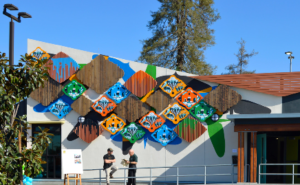 In a new report, Art as Infrastructure, the Los Angeles County Arts Commission summarizes an evaluation of its Creative Graffiti Abatement Project, which, since 2013, has sponsored the creation of community-involved, site-responsive artworks in effort to reduce tagging and other vandalism. The project evaluation—which found lower levels of vandalism and higher levels of activity in areas around the artworks—used a mixed-methods strategy that drew on administrative data as well as qualitative data collected through surveys, interviews, focus groups and ethnographic research methods. The report concludes with recommendations for managing and evaluating complex public art and engagement projects.
In a new report, Art as Infrastructure, the Los Angeles County Arts Commission summarizes an evaluation of its Creative Graffiti Abatement Project, which, since 2013, has sponsored the creation of community-involved, site-responsive artworks in effort to reduce tagging and other vandalism. The project evaluation—which found lower levels of vandalism and higher levels of activity in areas around the artworks—used a mixed-methods strategy that drew on administrative data as well as qualitative data collected through surveys, interviews, focus groups and ethnographic research methods. The report concludes with recommendations for managing and evaluating complex public art and engagement projects.
What Unites and Divides Urban, Suburban and Rural Communities
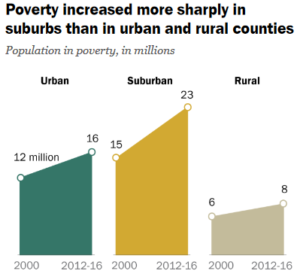 The Pew Research Center has released a study on how large demographic shifts are reshaping America. What Unites and Divides Urban, Suburban and Rural Communities addresses demographic shifts relative to the growing differences between citizens’ socioeconomic measures, values and politics. It also considers, relative to geography, citizens’ attitudes toward their communities and neighbors.
The Pew Research Center has released a study on how large demographic shifts are reshaping America. What Unites and Divides Urban, Suburban and Rural Communities addresses demographic shifts relative to the growing differences between citizens’ socioeconomic measures, values and politics. It also considers, relative to geography, citizens’ attitudes toward their communities and neighbors.
Improving Transformational Efforts of Government
Delivering for Citizens: How to Triple the Success Rate of Government Transformations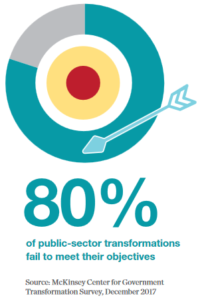 is a new paper from the McKinsey Center for Government that identifies five factors critical to realizing the goals of large government efforts such as overhauling an education system or improving health and social services. The paper highlights insights from 80 case studies and 30 interviews with leaders who have driven government transformations. Currently, such efforts—while necessary as populations expand, the climate changes and infrastructure grows old—typically fail. In fact, about 80% of transformational efforts of governments fail to fully meet their objectives, according to a survey of 3,000 public officials from 18 countries cited in the report.
is a new paper from the McKinsey Center for Government that identifies five factors critical to realizing the goals of large government efforts such as overhauling an education system or improving health and social services. The paper highlights insights from 80 case studies and 30 interviews with leaders who have driven government transformations. Currently, such efforts—while necessary as populations expand, the climate changes and infrastructure grows old—typically fail. In fact, about 80% of transformational efforts of governments fail to fully meet their objectives, according to a survey of 3,000 public officials from 18 countries cited in the report.
Art and Cultural Diplomacy
 The Art of Soft Power is a study from King’s College London exploring how diplomats at the United Nations Office at Geneva (pictured) deploy art and culture in service of international relations. Based on 20 interviews with diplomats stationed in Geneva, the report addresses how diplomats use soft power and cultural diplomacy to foster alliances, facilitate negotiations and improve the standing of their countries, among other things. While focused on international diplomacy, the report includes findings that might be useful to state arts agencies and other groups that facilitate connections and serve the public through the arts.
The Art of Soft Power is a study from King’s College London exploring how diplomats at the United Nations Office at Geneva (pictured) deploy art and culture in service of international relations. Based on 20 interviews with diplomats stationed in Geneva, the report addresses how diplomats use soft power and cultural diplomacy to foster alliances, facilitate negotiations and improve the standing of their countries, among other things. While focused on international diplomacy, the report includes findings that might be useful to state arts agencies and other groups that facilitate connections and serve the public through the arts.
Arts Education Program Evaluation
 The Indiana Arts Commission has published an evaluation of its Partnering Arts, Communities and Education (PACE) grant program, which funds rigorous, year-long artist residencies in underperforming elementary schools in underserved communities. The new assessment report considers two years of data—drawn from metrics measuring students’ self-image, learning engagement, vocabulary development, writing skills and more—that reflects student growth in six elementary schools participating in the PACE program. It concludes that the program is yielding steady, promising results.
The Indiana Arts Commission has published an evaluation of its Partnering Arts, Communities and Education (PACE) grant program, which funds rigorous, year-long artist residencies in underperforming elementary schools in underserved communities. The new assessment report considers two years of data—drawn from metrics measuring students’ self-image, learning engagement, vocabulary development, writing skills and more—that reflects student growth in six elementary schools participating in the PACE program. It concludes that the program is yielding steady, promising results.
Joshua Davis Is Executive Director in Illinois
 The Illinois Arts Council Agency board has elected Joshua Davis as the agency’s executive director. Davis began working with the agency in 2008 and has served in several different capacities, including deputy director and, most recently, acting executive director. He earned his bachelor’s degree from Western Michigan University and his master’s degree from Brandeis University, and has been active in the Chicago theater community and nonprofit sector for many years.
The Illinois Arts Council Agency board has elected Joshua Davis as the agency’s executive director. Davis began working with the agency in 2008 and has served in several different capacities, including deputy director and, most recently, acting executive director. He earned his bachelor’s degree from Western Michigan University and his master’s degree from Brandeis University, and has been active in the Chicago theater community and nonprofit sector for many years.
Iowa Leadership Transition
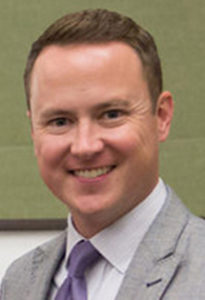 Matthew Harris departs his role as administrator of the Iowa Arts Council (IAC), a division of the Iowa Department of Cultural Affairs, on July 11. He has accepted a position leading business and community partnerships for Des Moines Area Regional Transit Authority. Since Harris joined the agency in 2011, IAC has overhauled its grant-making portfolio and introduced digital processes throughout all funding programs. It has expanded professional development support for individual artists and nonprofit leaders, launched the biennial Iowa Arts Summit, assumed oversight of the Iowa Great Places program and commemorated its 50th anniversary. Throughout his tenure, Harris has taken an active role in the field, serving on the boards of directors of both NASAA and Arts Midwest while participating in national policy dialogues on rural arts development. He considers it a privilege to have served the arts in Iowa, and is grateful to his team and his state arts agency colleagues for their support and camaraderie.
Matthew Harris departs his role as administrator of the Iowa Arts Council (IAC), a division of the Iowa Department of Cultural Affairs, on July 11. He has accepted a position leading business and community partnerships for Des Moines Area Regional Transit Authority. Since Harris joined the agency in 2011, IAC has overhauled its grant-making portfolio and introduced digital processes throughout all funding programs. It has expanded professional development support for individual artists and nonprofit leaders, launched the biennial Iowa Arts Summit, assumed oversight of the Iowa Great Places program and commemorated its 50th anniversary. Throughout his tenure, Harris has taken an active role in the field, serving on the boards of directors of both NASAA and Arts Midwest while participating in national policy dialogues on rural arts development. He considers it a privilege to have served the arts in Iowa, and is grateful to his team and his state arts agency colleagues for their support and camaraderie.
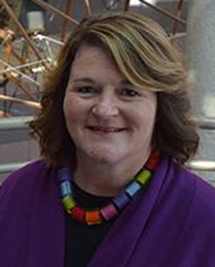 Chris Kramer will assume leadership of the Iowa Arts Council. Kramer is the acting director of the Iowa Department of Cultural Affairs (IADCA), where she has worked since 2012. Appointed to the role of acting director in August 2017, Kramer oversees an extensive cultural affairs portfolio including arts, history and preservation as well as film and media industry services. Prior to her tenure at IADCA, Kramer held senior posts in government relations and development for the Science Center of Iowa (SCI). While at SCI, Kramer managed the center’s $62 million capital campaign, and has extensive experience working on local, state and federal legislative initiatives, serving on the Science Technology Center’s National Public Policy Committee along with the Greater Des Moines Partnership Government Policy Committee.
Chris Kramer will assume leadership of the Iowa Arts Council. Kramer is the acting director of the Iowa Department of Cultural Affairs (IADCA), where she has worked since 2012. Appointed to the role of acting director in August 2017, Kramer oversees an extensive cultural affairs portfolio including arts, history and preservation as well as film and media industry services. Prior to her tenure at IADCA, Kramer held senior posts in government relations and development for the Science Center of Iowa (SCI). While at SCI, Kramer managed the center’s $62 million capital campaign, and has extensive experience working on local, state and federal legislative initiatives, serving on the Science Technology Center’s National Public Policy Committee along with the Greater Des Moines Partnership Government Policy Committee.
Al Head of Alabama to Retire December 31
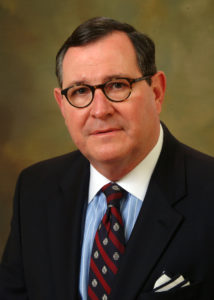
Photo by Paul Robertson
Al Head, executive director of the Alabama State Council on the Arts for the past 33 years, will retire effective December 31, 2018. Head is the longest sitting state arts agency director in the country. Prior to accepting the position in Alabama in 1985, Head had been director of the Louisiana Division of the Arts and Arts Council since 1977. As the first state arts director under governmental reorganization, he orchestrated the first state appropriation for the Arts Council in Louisiana. His state service began in 1972 with the Florida Department of State, Division of Cultural Affairs, and included a two-year period as director of the Stephen Foster Folk Life Center. Including the Florida and Louisiana years, Head’s tenure in the arts field spans more than 46 years, a period that has experienced significant change in the arts and government. During Head’s time in Alabama, he considers the development of a nationally recognized state folklife program, the creation of the Alabama Writers Forum, the creation of Design Alabama, the creation of the Alabama Dance Council, the expansion of arts education partnerships and the cultivation of a cultural exchange with Pietrasanta, Italy, as a few of many highlights. Head received the National Heritage Award in 2012, given by the National Endowment for the Arts, and the 1998 Gary Young Award, presented by NASAA. He summarized his long career in the state arts agency field by saying, “It has been a wonderful and memorable run in a field that is made up of a special group of artists, arts administrators, arts educators, arts patrons and volunteers. The opportunity to contribute a bit to the quality of life in Alabama through the arts has been a privilege.” The Alabama State Council on the Arts will immediately begin a national search for a successor.
In this Issue
State to State
- Washington: Center for Washington Cultural Traditions
- Missouri: Underserved Arts Grants M
- North Dakota: Governor's Photo Contest
Legislative Update
Announcements and Resources
More Notes from NASAA
Guest Column
Research on Demand
SubscribeSubscribe
×
To receive information regarding updates to our newslettter. Please fill out the form below.
